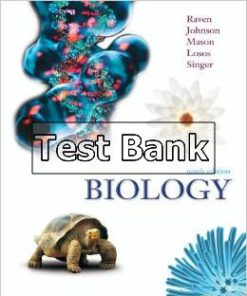Biopsychology 9th Edition Pinel Test Bank
You may also like
-
$26.50
$50.00 -
$26.50
$50.00 -
$26.50
$50.00
Biopsychology 9th Edition Pinel Test Bank

Product details:
- ISBN 9780205915576 / 0205915574
- Author: John P. Pinel
Delves into how the central nervous system governs behavior Biopsychology, 9/e, introduces the study of the biology of behavior; that is, the neural mechanisms of psychological processes in the central nervous system. This program combines biopsychogical science and student-oriented discussion, interweaving the basics of this specialized field with clinical case studies and exploring the personal and social implications that arise. The author encourages interactive learning and creative thinking. His clear and engaging presentation makes the material personally and socially relevant to readers. MyPsychLab is an integral part of the Pinel program. Engaging activities and assessments provide a learning and teaching system that transforms students into scientific thinkers. With MyPsychLab, students can watch videos on psychological research and applications, participate in virtual classic experiments, and develop critical thinking skills through writing. This title is available in a variety of formats – digital and print. Pearson offers its titles on the devices students love through Pearson’s MyLab products, CourseSmart, Amazon, and more. To learn more about pricing options and customization.
- Chapter 1: John O’Keefe, May-Britt Moser, and Edvard Moser’s discovery of cells that constitute a positioning system in the brain – place cells and plate cells.
- Chapter 2:
- New DNA study, providing genetic evidence that Homo sapiens mated with their Neanderthal neighbors.
- Use of ancient DNA in studies
- Transgenerational epigenetic inheritance
- Chapter 3: The neuron classification problems.
- Chapter 5:
- Examples of using a combination of positron emission tomography (PET) and functional MRI techniques.
- The recent discovery how fMRI scans can provide a reliable way to communicate with patients in a vegetative state
- Human Connectome Project (HCP)
- Latest research and news about optogenetics
- Chapter 6: Explanation of many different types of retinal ganglion cells.
- Chapter 7: Medical definition of Merkel’s disks and bulbous corpuscles (Ruffini endings).
- Chapter 8:
- Research on posterior parietal association cortex
- Control of robotic limbs by patients with implanted cortical microelectrode array
- Primary motor cortex and action map model
- Chapter 9:
- The importance of glial cells in the pathophysiology of Autism Spectrum Disorders
- The role of microglial cells in synaptic reorganization
- Chapter 10:
- Coverage of chronic traumatic encephalopathy, a degenerative disease of the brain caused by repeated head traumas.
- New case study about Junior Seau, a football player who suffered from chronic brain damage
- Apolipoprotein E (ApoE) as a significant genetic risk factor for Alzheimer’s disease
- Chapter 11:
- Research on time cells in the hippocampus
- New section on memory engram cells
- Chapter 12:
- Recent research on the role of the hypothalamic arcuate nucleus in hunger and satiety
- Impact of the intestinal microbiota alteration on obesity
- Chapter 13: New section on gender identity, a person’s sense of being male or female.
- Chapter 18:
- Peripartum depression, the new term for depression associated with having a baby
- Brain stimulation therapies for the treatment of depression
People also search:
simply psychology biopsychology
biopsychology examples
biopsychology meaning
biopsychology and evolutionary psychology
biopsychology approach definition in psychology
a level psychology biopsychology
best biopsychology schools
biopsychology cognition and neuroscience jobs












